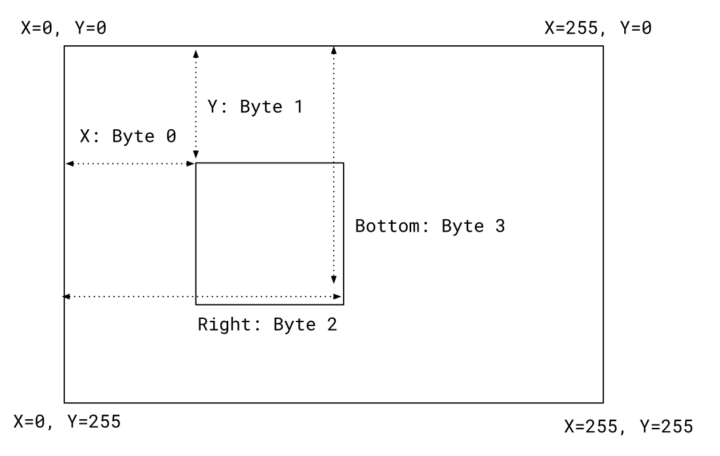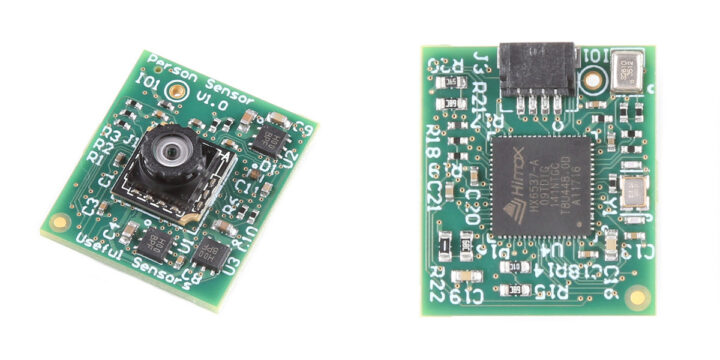It’s now much easier to AI features to your project thanks to better tools, but as we’ve experienced when trying out Edge Impulse machine learning platform on the XIAO BLE Sense board, it still requires some effort and the learning curve may be higher than some expect.
But for common tasks like face detection, there’s no reason for the solution to be hard-to-use or expensive, and Pete Warden (Useful Sensors) has designed the $10 Person Sensor fitted with a camera module pre-programmed with algorithms that detect nearby faces and reports the results over an I2C interface.
Person Sensor specifications:
- ASIC – Himax HX6537-A ultra-low-power AI accelerator @ 400 MHz with 2MB SRAM, 2MB flash
- Camera
- Image Sensor – 110 degrees FOV
- Image scan rate – 7Hz with no facial recognition
- Image scan rate – 5Hz with facial recognition active
- Host interface
- Qwiic connector for the I2C interface up to 400 Kbps
- Interrupt pin used to indicate if any people have been detected.
- Operating Voltage – 3.3V
- Power consumption
- Up to 150mW
- 5mW for the LED
- Dimensions – Small…

You’ll need to connect the module to a host microcontroller that with either poll for data or use the interrupt pin, and get face detection coordinates out of a 256×256 pixels area, as well as confidence in percent, and whether the face is facing the camera or not. No image data is sent to the host and as such it offers improved privacy. Note the Himax microcontroller is preprogrammed and you can’t update the firmware or get updates.
A sample program (polling mode) for the Raspberry Pi Pico would look like this:
|
1 2 3 4 5 6 7 8 9 10 11 12 13 14 15 16 17 18 19 20 21 |
person_sensor_results_t results = {}; while (1) { // Perform a read action on the I2C address of the sensor to get the // current face information detected. if (!person_sensor_read(&results)) { printf("No person sensor results found on the i2c bus\n"); sleep_ms(SAMPLE_DELAY_MS); continue; } printf("********\n"); printf("%d faces found\n", results.num_faces); for (int i = 0; i < results.num_faces; ++i) { const person_sensor_face_t* face = &results.faces[i]; printf("Face #%d: %d confidence, (%d, %d), %dx%d, %s\n", i, face->box_confidence, face->box_left, face->box_top, face->box_right, face->box_bottom, face->is_facing ? "facing" : "not facing"); } sleep_ms(SAMPLE_DELAY_MS); } |
The module will also return identity information, or in other words, try to detect up to 8 different users, but this is not shown in the example above, and it’s not clear how well that works. You’ll find documentation and code samples in different languages including Arduino, CircuitPython, and Python on GitHub.
The video below shows a face following fan demo based on the Person Sensor module.
The Person Sensor is listed on Sparkfun for $9.95, but is out of stock and on backorder at the time of writing.
Via Hackster.io

Jean-Luc started CNX Software in 2010 as a part-time endeavor, before quitting his job as a software engineering manager, and starting to write daily news, and reviews full time later in 2011.
Support CNX Software! Donate via cryptocurrencies, become a Patron on Patreon, or purchase goods on Amazon or Aliexpress





